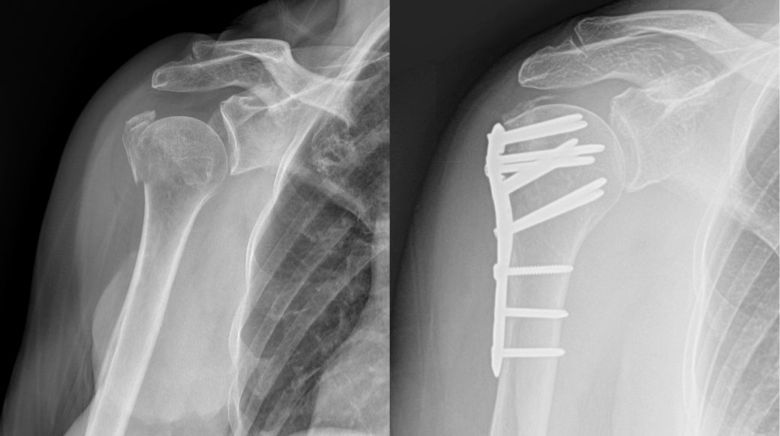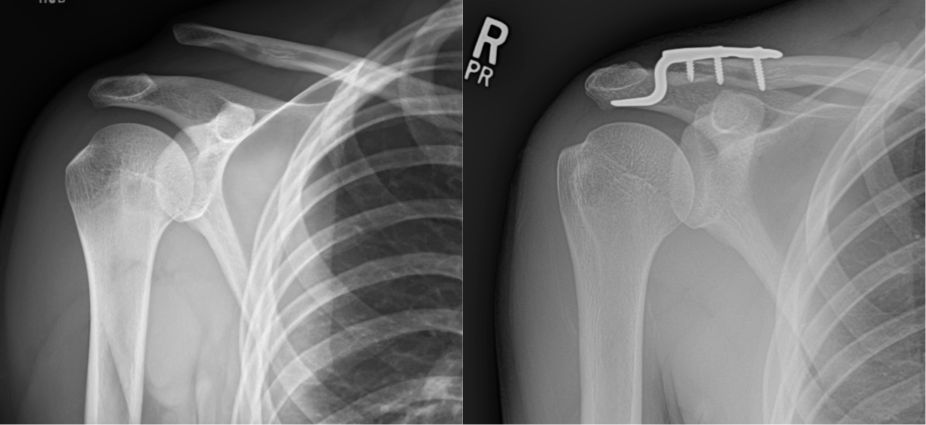Our surgeons have substantial experience in shoulder injuries. Trauma and fractures involving the shoulder are some of the most common injuries in orthopaedics. Proximal humerus fractures (ball at top of arm) are the 3rd most common fracture, while clavicle fractures represent 2-10% of all adult fractures. Fractures tend to follow a bimodal age distrubution, with younger patients experiencing injury from high impact trauma, with another spike in elderly patients with typically low force injury.
Proximal humerus fractures can involve four sections of the proximal humerus – the shaft, the ball, the lesser tuberosity, and greater tuberosity. Treatment options include non-operative treatment, surgical fixation, and replacement. The vast majority can be successfully treated without surgery. Depending on age, fragment displacement and angulation, some patients have better outcomes with surgical repair or replacement.

Shoulder radiographs demonstrating a complex proximal humerus fracture on the left, treated with a reverse shoulder arthroplasty on the right.

Shoulder radiographs demonstrating a valgus impacted proximal humerus fracture (left image), treated with open reduction internal fixation (right image).
A direct fall on the shoulder can cause a "shoulder separation" or acromioclavicular (AC) joint sprain. High grade sprains can result in elevation of the distal end of the clavicle resulting in a bump or prominence. These are usually treated without surgery. If significant displacement or pain persists after non-operative treatment, surgical repair can be performed. Acute injuries can be treated with plating or other fixation methods, whereas chronic tears require ligament reconstruction.

Shoulder radiographs demonstrating a "shoulder separation" or acromioclavicular sprain ("AC sprain"), with the clavicle end elevated away from the acromion (left image), and repair with open reduction internal fixation (right image).
Clavicle fractures occur most frequently after a direct fall on the shoulder. They are especially common in young males. Dirt biking accidents are a frequent mechanism. They present with pain and swelling over the clavicle. In general, greater than 2 cm of shortening or 100% displacement increases the chances of non-union, decreased shoulder strength, decreased endurance, and altered scapular mechanics with pain. Many clavicle fractures can be treated without surgery; however, patients with greater than 2 cm of shortening or greater than 100% displacement typically have better short term outcomes with surgical fixation.

Clavicle radiographs demonstrating a multi-fragmented right clavicle fracture (left image), treated with open reduction and internal fixation (right image)